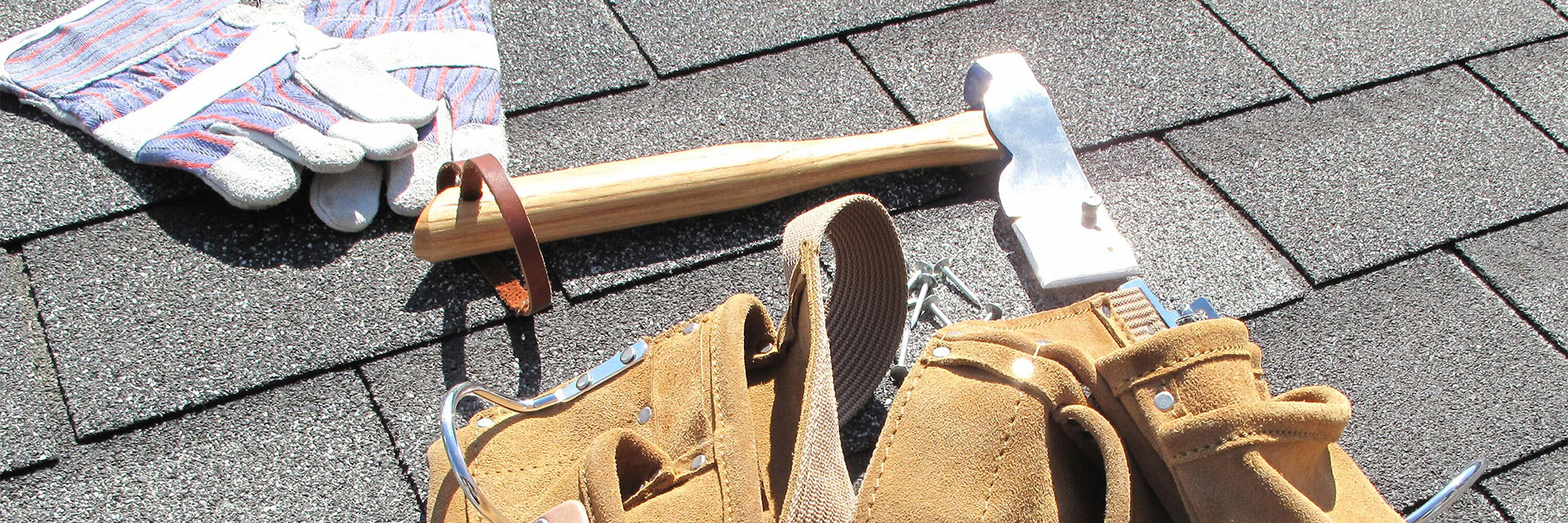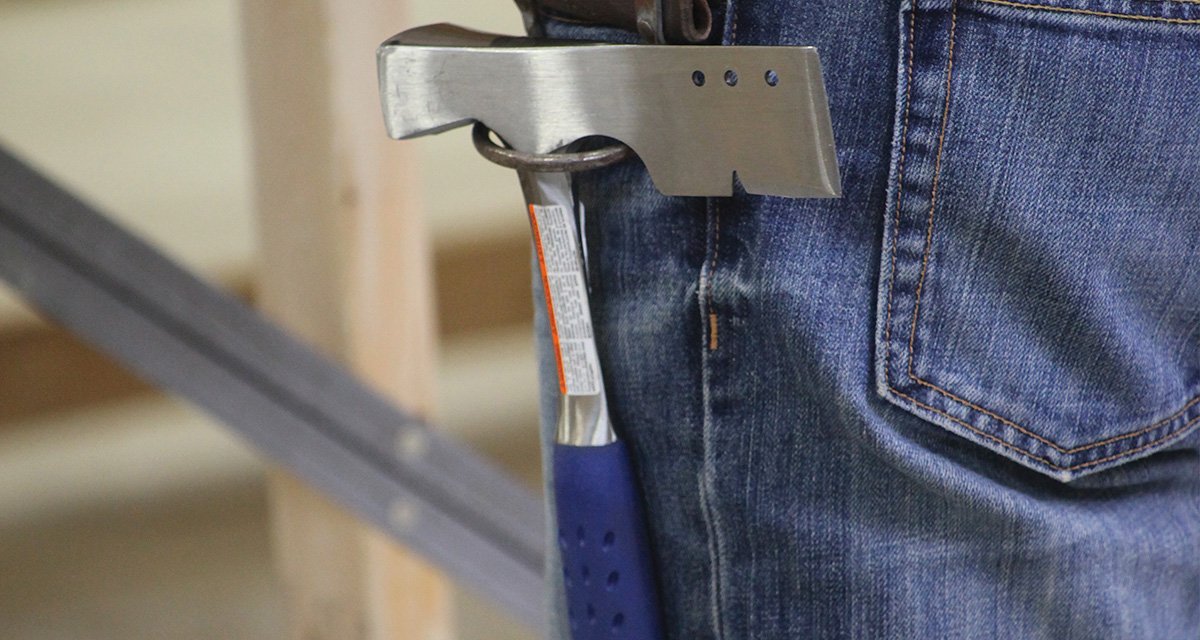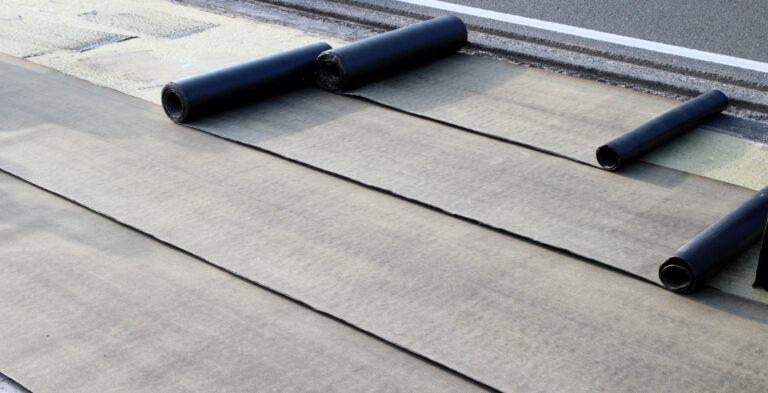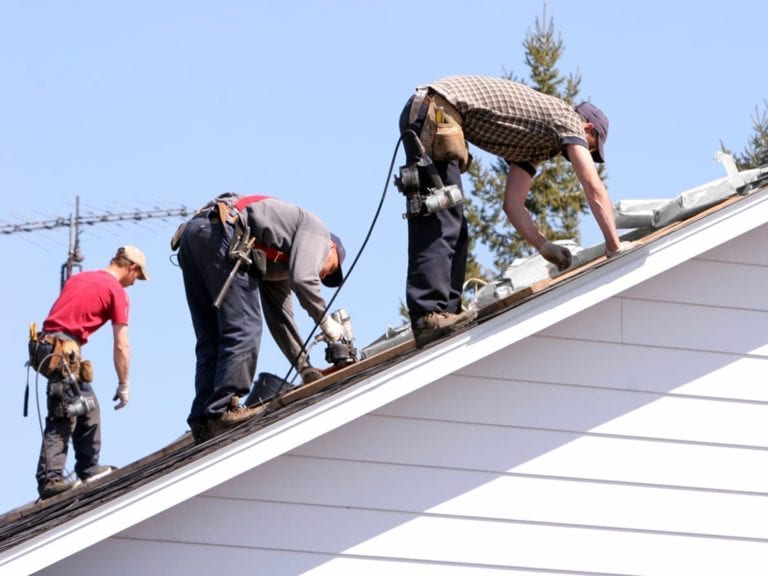Shingle Roofing Tools and Equipment that May Be Needed to Start a Roofing Company
Disclaimer: It is incumbent upon the roofer to know and abide by all relevant safety regulations for his/her equipment and tools, and the use of such equipment and tools.
What tools should a roofer have when they are starting their own business? Should you buy or rent? To answer your questions and help get you organized, we’ve consulted with Andy Lodge, a roofing industry veteran. He’s compiled a list of the tools you need for roofing installation, replacement and repair. Everything from nail guns to safety equipment is included on the checklist.
Plus, we’ll go into detail about each tool, so you’ll know what to look for when you purchase them. You’ll discover what roofers use each tool for as well as the alternative tools that are available and what benefits they may offer you. For example, you could use a roofing knife or a utility knife as your tool to cut shingles. We’ll discuss the pros and cons of each so you can determine which is right for your business.
Shingle Roofing Tools Checklist
Here are all of the tools roofers needs:
- Roofing nail guns.
- Hammer tacker stapler.
- Roofing hammer or hatchet.
- Air compressor.
- Roofing blade or utility knife.
- Roofing shovel or shingle tear-off tool.
- Scoop shovel.
- Pry bar.
- Tarps.
- Chalk line tools (reel and chalk).
- Measuring tape or laser tool.
- Caulking gun or cement bucket and trowel.
- Tin snips.
- Reciprocating saw and circular saw.
- Sawhorses.
- Drill (cordless, electric or air).
- Generator.
- Ladders and extension ladders.
- Ladder hoist.
- Hard hats.
- Safety harnesses and all other personal protective equipment.
- Roofing shoes or boots (steel-toed-shoes with soft soles).
- Roof brackets or toe boards.
- Rake.
- Broom.
- Magnetic sweeper.
- Truck.
General Tool Tips for Roofers
Before we explore your options for each tool you’ll need, we want to offer some more general advice that you should keep in mind when picking out any tool or piece of equipment.
Firstly, when you’re starting your own roofing business, it makes sense that you’ll want to keep upfront costs minimal. To do so, you can choose used tools and equipment. Used nail guns, brooms, magnetic sweepers and most other equipment will get the job done just fine. The exception is safety equipment, like harnesses and hard hats, which should not be bought used. Otherwise, be sure that the used tools and equipment you choose are still in working condition.
If you’re not sure if a used tool or piece of equipment is working well enough, decide against purchasing it. Your reputation as a roofer will depend on the quality of work you and your team produce. Faulty equipment can make quality roofing a lot more difficult and more dangerous. In the early days of a business, one big mistake can make getting your business off the ground very difficult.
Another smart way to reduce the costs of equipment without sacrificing job quality is roofing tool rental. If you’re not sure that a more expensive piece of equipment is absolutely necessary, or will really save you time, you can rent it for a trial period. Track exactly how much time it does save you. Then, you can do a cost-benefit analysis on whether you should buy it outright.
One last general tip for tool purchases: Make sure you have enough tools for each member of your team. Remember that as your business grows and you add staff, you may have to invest in more tools and equipment. This expense will increase your hiring costs beyond just the cost of interviewing and training time.
Shingle Roofing Tools in Detail
Nail Guns and Roofing Hammers or Hatchets
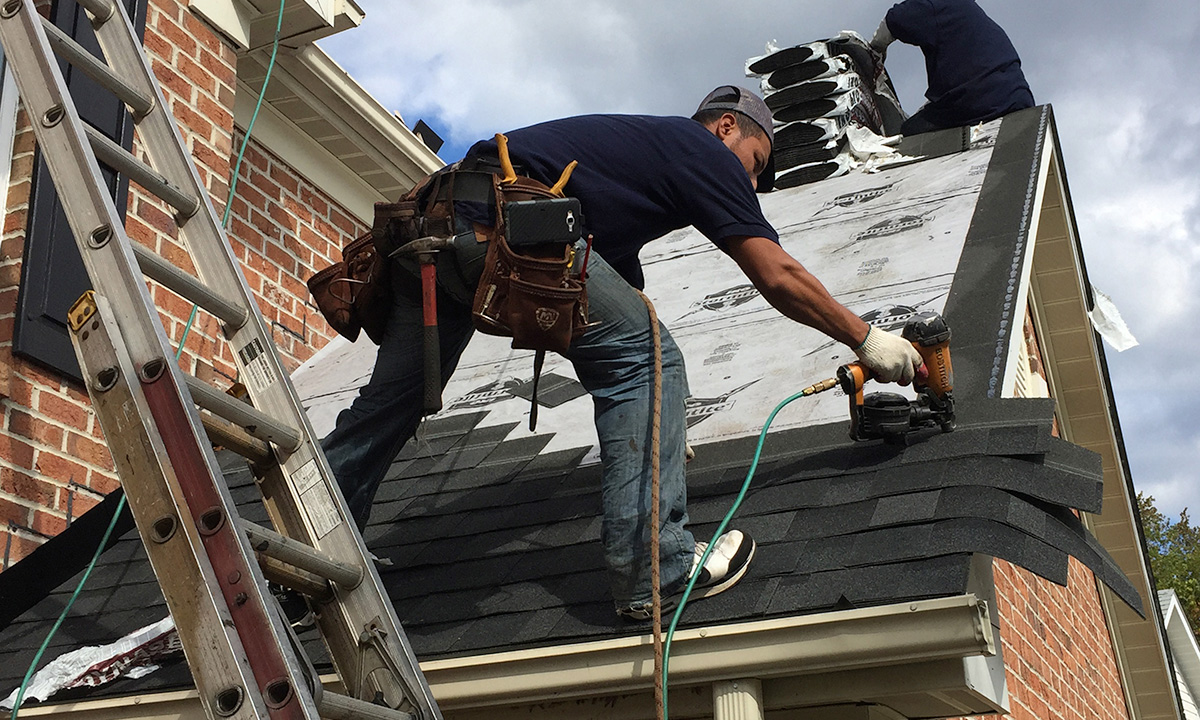
Most roofers will use nail guns for applying shingles and other nailing work. Nail gun safety is a concern, but most roofers find that nail guns are faster than hammers. However, there are still many roofers who prefer to use roofing hammers or hatchets. If you choose to use nail guns, you will still need to have a roofing hammer on hand for other nailing tasks or for when holding a nail gun might be more encumbering than it’s worth.
Hammer Tacker Stapler
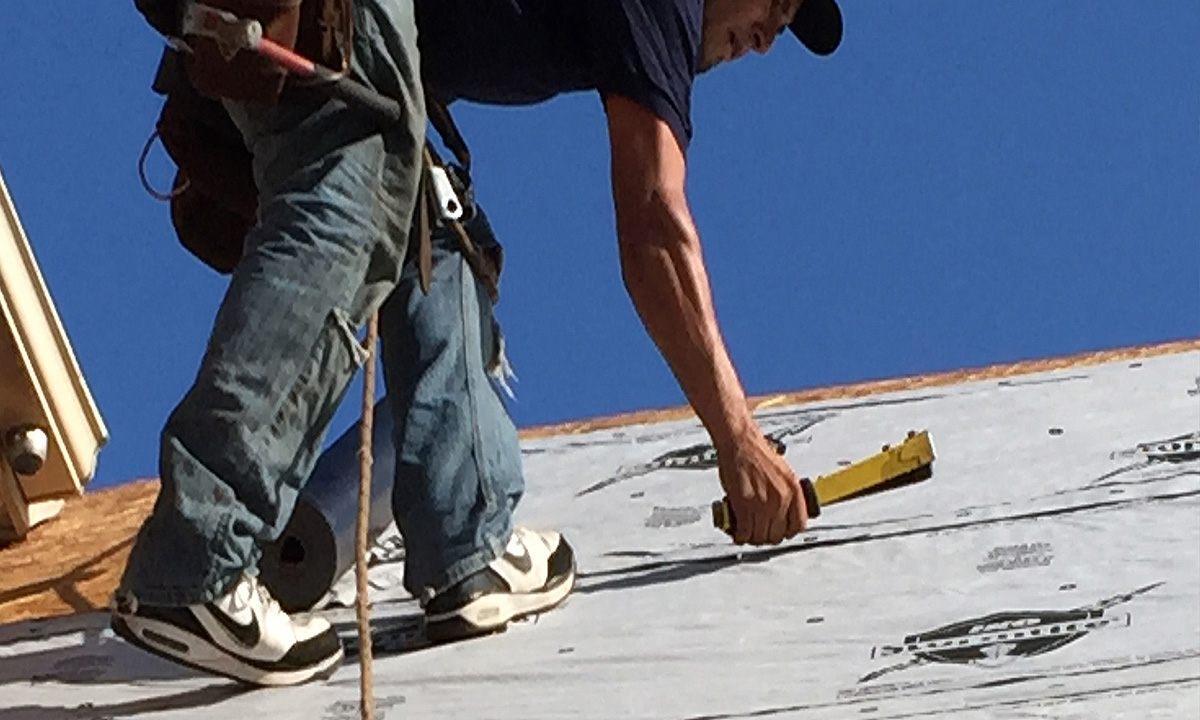
Felt underlayment may be installed with staples, or cap nails, depending on your building code requirements. If you use staples, you will need a staple gun. If you’re using air nail guns, it makes sense to also use an air staple gun. There are even 2-in-1 nail and staple guns.
When you install felt underlayment, you also need to add plastic or metal caps that are 1 inch in diameter. These caps prevent water from getting beneath the underlayment in the event of a tear.
Air Compressor
If you choose to use pneumatic nail guns, you will also need a roofing air compressor to maintain proper pressure in your tools at all times. You may be tempted to purchase a nailer-compressor combo tool that doesn’t need an air compressor. However, these tools don’t maintain pressure long enough to complete a roofing job. Plus, the air cartridges are expensive. Remember that any delay on the job site will cost you in labor time and missed opportunities for more work. Having a compressor on hand at all times is much more convenient.
As your business expands, you may be running more than a few nail guns at once. If so, you may need a reserve air tank, also called a “pig” air tank that can supply the extra air you’ll need to keep all of the nailers running at once. Buying a reserve tank may be more cost-effective than buying a new air compressor.
A Shingle Cutter: Either Roofing Blade or Utility Knife
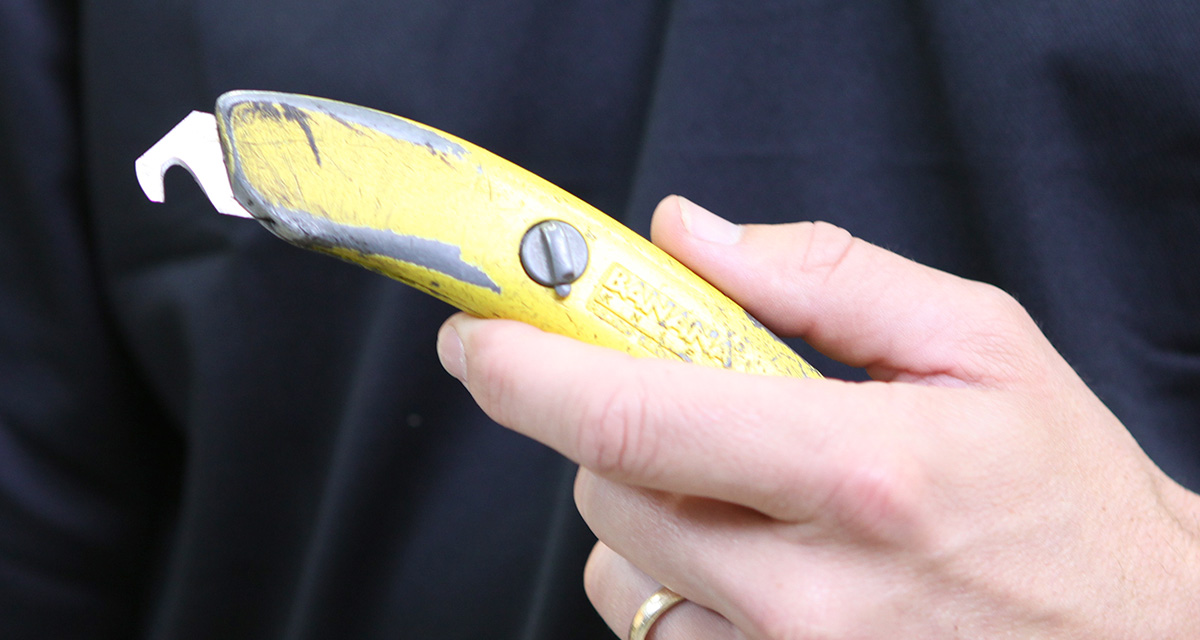
Roofers need utility knives or roofing hook blades for many jobs, including as shingle cutters. If you install 3-tab shingles, you’ll need to cut the shingles in sections to form hip and ridge shingles. No matter which shingle you use, you’ll also need to cut a roof underlayment as well as an ice and water protector. A utility knife is a fine choice that can handle the job, but a roofing knife is a bit more specialized and makes your job easier. Roofing blades have special hooks near the edge to help you control the cut when you’re working on thicker material, like shingles.
Scoop Shovel, Roofing Shovel or Pry Bar
Scoop shovels are large, deep shovels without a point, as opposed to the flat, pointed landscaping shovels meant to dig. A roofer can use a scoop shovel to move loose shingles into a dumpster.
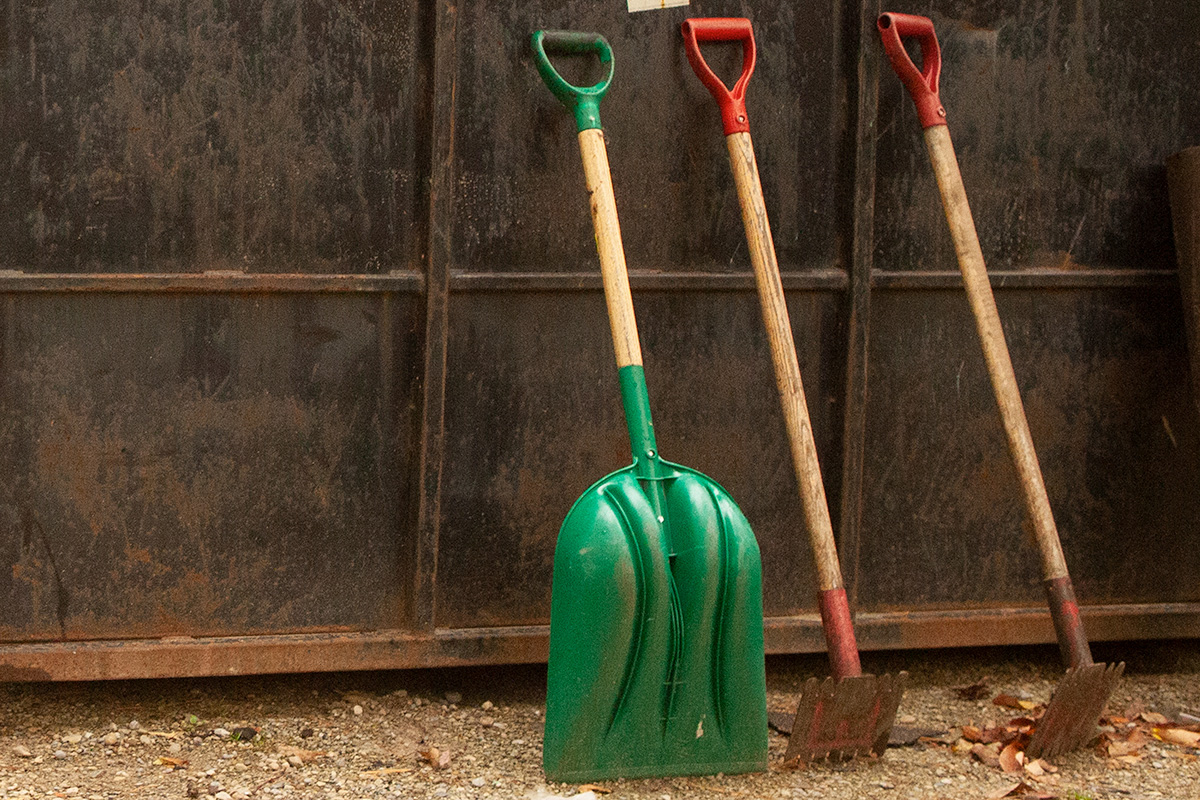
A scoop shovel may be your best choice at first because it will be cheap and will get the job done. However, you should also consider roofing shovels or tear-off shovels. These specialized tools are the best roofing tear-off tools you can get. They have steel teeth to help you lift old shingles off the roof and sweep them down to the dumpster or tarp. Some even have angled faces so you don’t have to crouch as much to use them.
You may want to invest in a pry bar too. Pry bars are usually much better at removing nails and select shingles when you’re doing repair jobs and don’t want to pull the whole roof off. If you have a roofing hammer, you can use the claw as your roofing nail puller instead. You’ll have to find the combination that works best for you.
Tarps
During any roofing job, you will need to have tarps on hand in case you have worse weather than expected that prevents you from continuing the job. You’ll use the tarps to protect any exposed portions of your customer’s roof to keep it safe from water damage.
Tarps are also very useful for other tasks during a roof tear-off. You can lay tarps down as preparation before a re-roof job. Lay them on the ground over the landscaping, and they will collect shingle pieces and stray nails. Tarps make cleaning up much easier and can protect fragile plants, which your customer will appreciate.
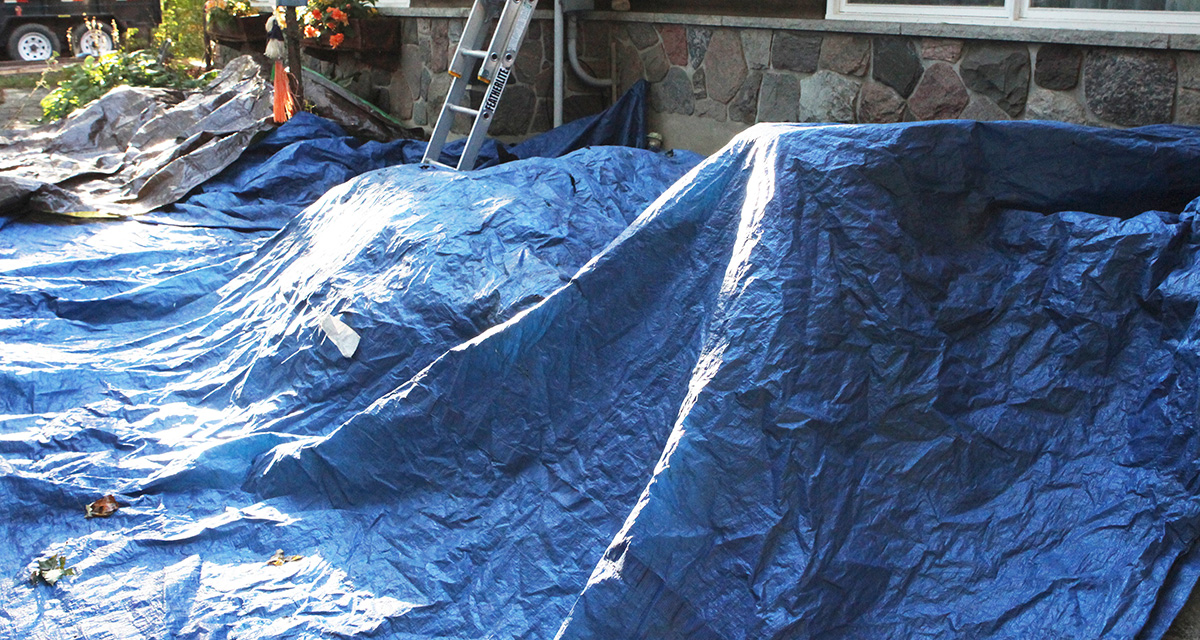
You might also use tarps to protect your materials from the weather, including when you’re stacking shingle bundles outdoors.
Chalk Line Tools
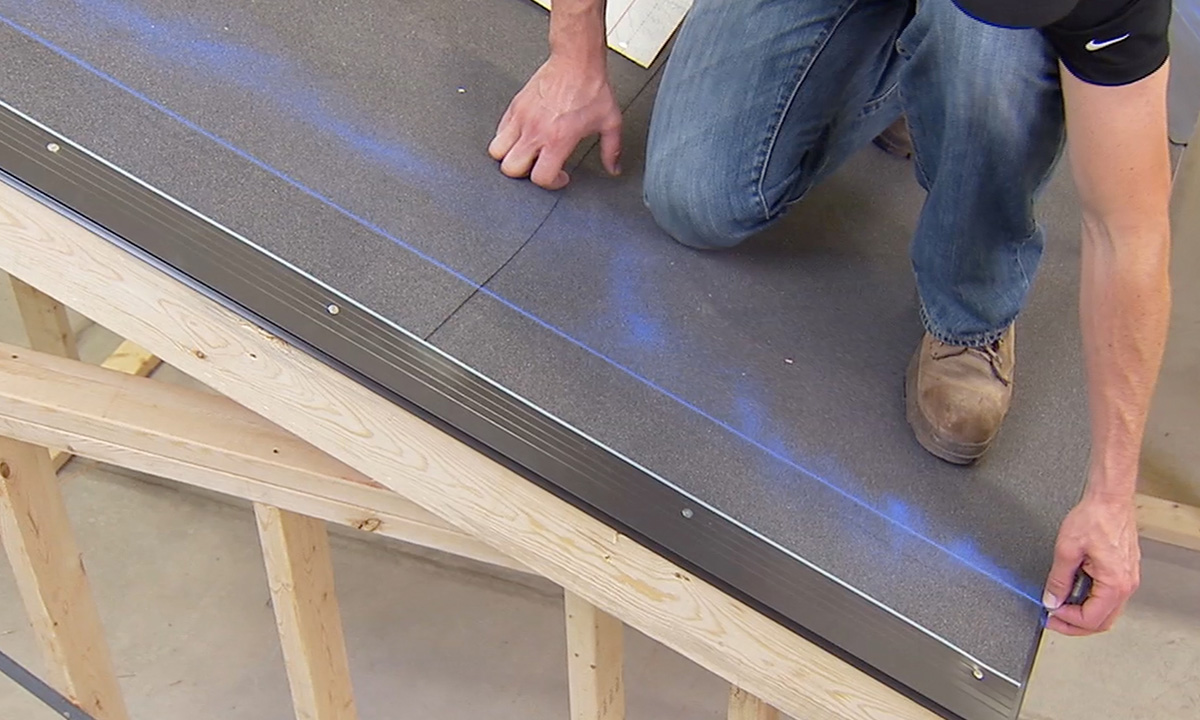
Roofers need to snap chalk lines frequently, including when they install open valleys and align gutters. To do so, you’ll need a chalk reel. When you purchase the reel, it will come with its own chalk. You only buy a chalk reel once, and they aren’t too expensive; so look for quality. You can save by buying bulk replacement chalk.
Measuring Tape or Laser Tool
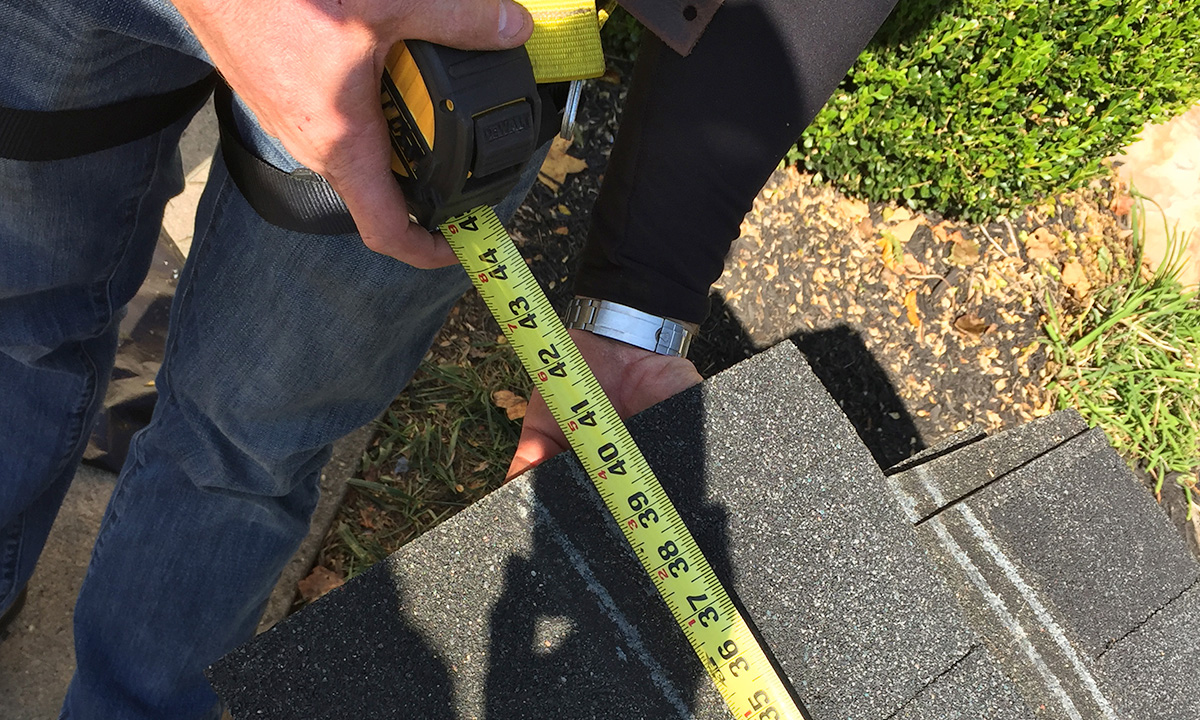
The use of measuring tapes is pretty straightforward. These days, high-tech laser tools are also becoming popular for measuring. However, they aren’t always ideal for roofing purposes because they aren’t as accurate over short distances. You will at least need a metal measuring tape as a backup.
Caulking Gun or Cement Bucket and Trowel
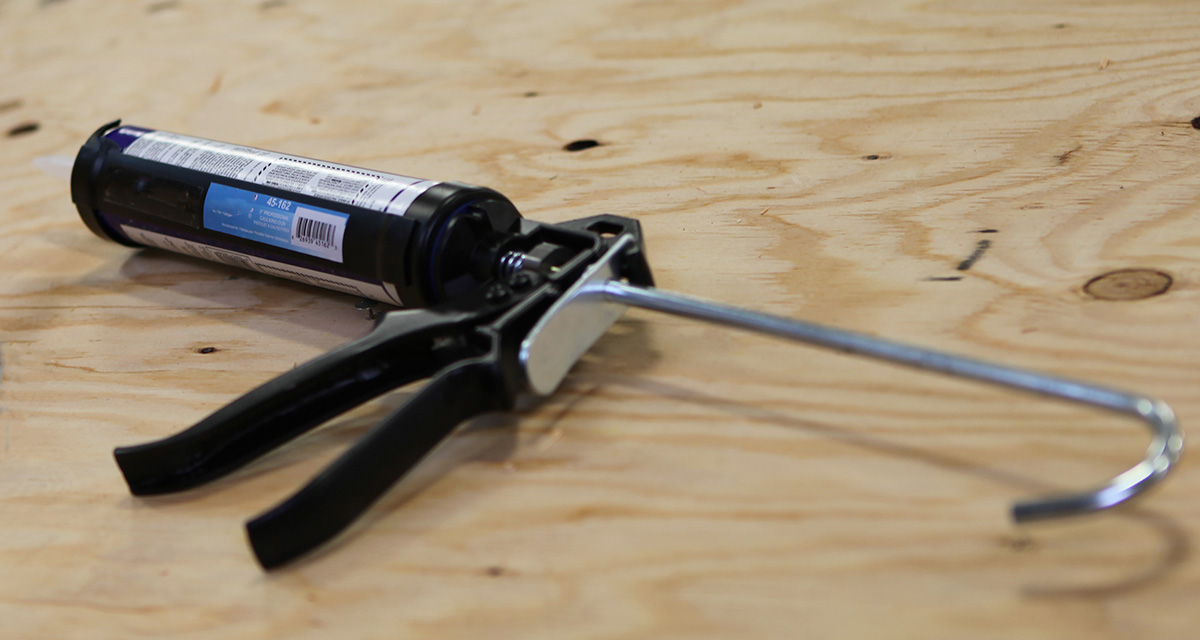
There are two ways to apply roofing cement: using a caulking gun or cement can and trowel. Caulking guns allow you more precision and are, generally, preferred.
Tin Snips
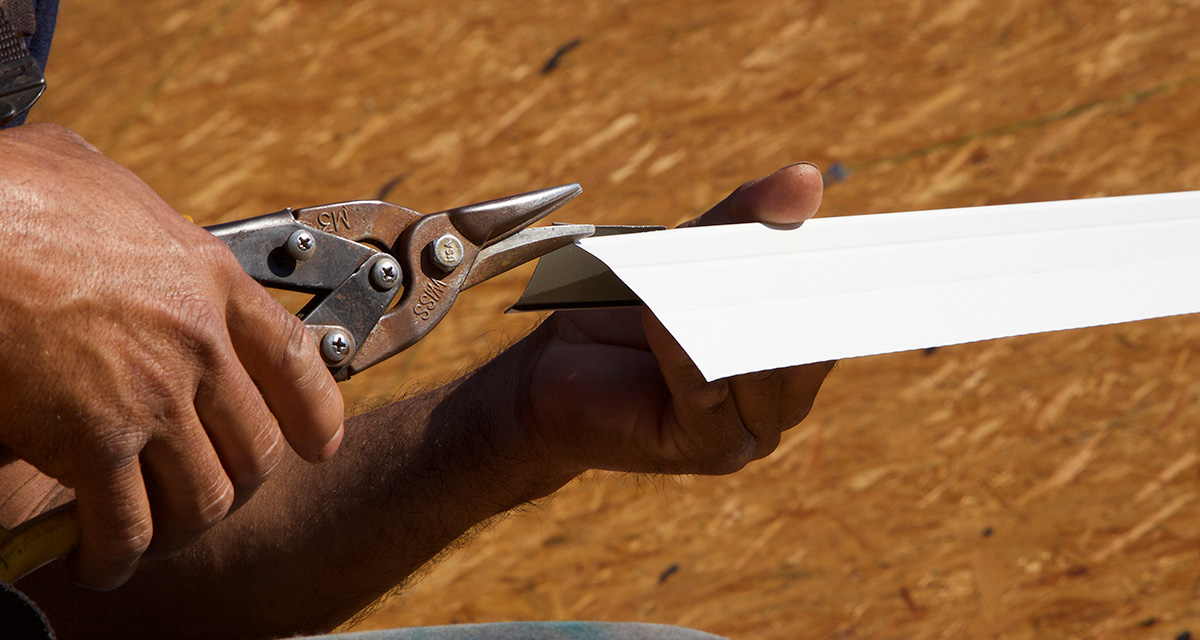
Tin snips are used to trim metal flashing to size and to cut gutter material. You can get tin snips that are straight or that lean left or right. If you’re frequently making curved cuts, it may be worthwhile to buy curved tin snips. In fact, if you specialize in gutters, you can buy motorized shears or drill attachments that can save your hands from constantly cutting sheet metal. However, you should be able to get away with simple tin sips if you’re trying to cut costs.
Reciprocating Saw and Circular Saw
Why use two different saws? Well, you’ll need a reciprocating saw when you’re cutting out roof decking for a skylight or when removing some decking that has suffered water damage. While less precise than circular saws, reciprocating saws are easier to use on rooftops and able to get into tight spots without over-shooting. Experienced roofers may find that by adjusting the circular saw depth and working carefully they can get away without a reciprocating saw.
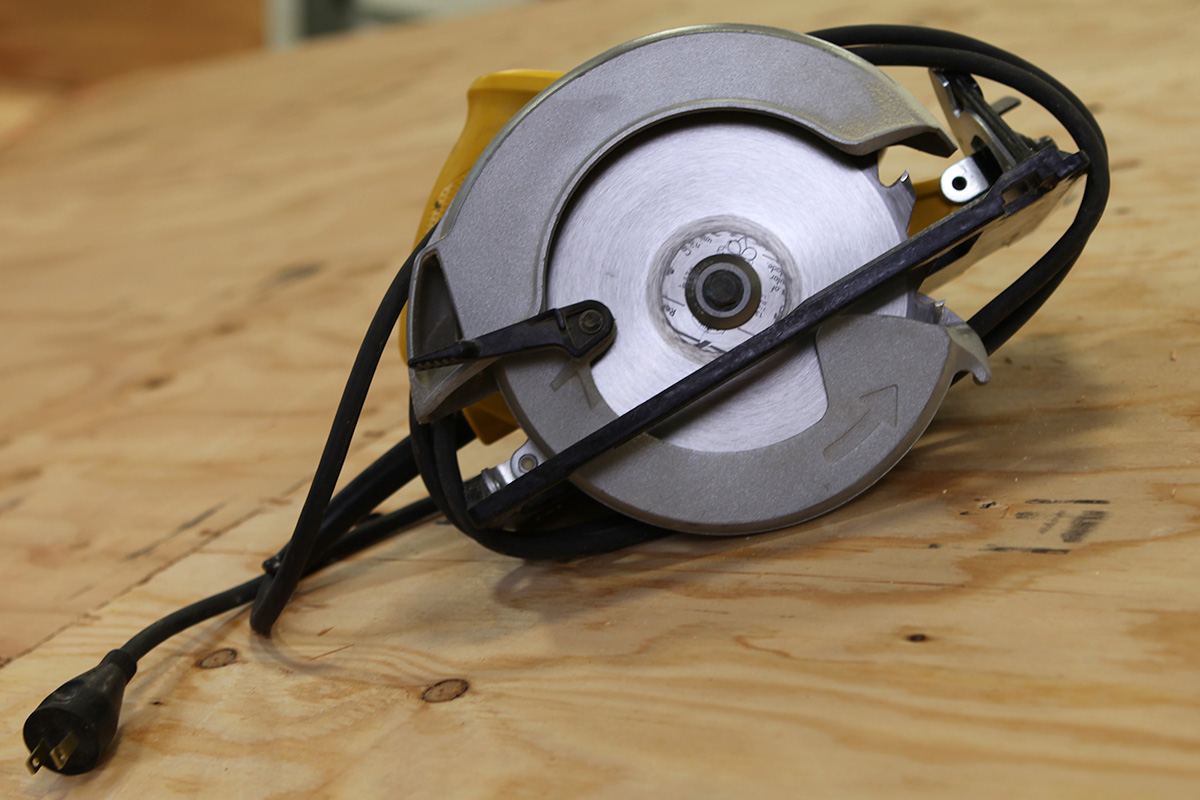
If you need to repair roof decking, you’ll need some sort of saw to cut the new decking to size. You won’t be doing this on the roof, and getting a straight line will be critical; so the best tool for the job is a circular saw. These saws can’t cut curves, but they are faster than reciprocating saws. Choose at least a 7 ¼-inch blade if you want your circular saw to be able to cut through 2-inch thick wood. While your roof decking may not be this thick, you may also want to use the circular saw to cut toe boards, which should be much thicker.
Sawhorses
Sawhorses are necessary when you use a circular saw. Buying these used is smart, so long as they are still stable.
Drill (Cordless Electric or Air)
If you’re investing in a large air compressor for your nail guns, it may make sense to buy an air drill as well. On the other hand, cordless electric drills are easier to use at height because there is no cord for you to trip up over. Although cordless drills have limited battery life, as a roofer you won’t be using them too often. The convenience of a cord-free drill may make up for its recharging time.
Ladders and Extension Ladders
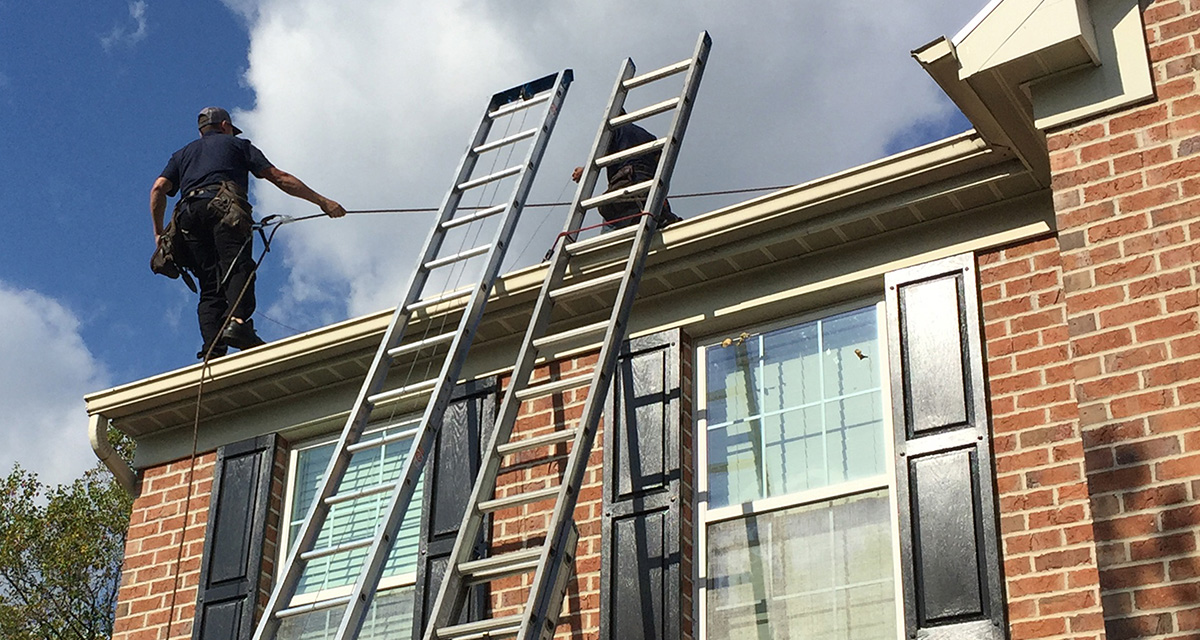
You will need at least one step ladder and one extension ladder to reach roofs of different heights. Ladders will also limit how fast you can work. If you only have two ladders, only two people will be able to bring up shingles at a time, and you’ll only be able to access two parts of the roof at once. Depending on the size of your team, more ladders may make your team more efficient. Learn more about how to choose the right roofing ladder.
Ladder Hoist or Rental Information for Boom Trucks
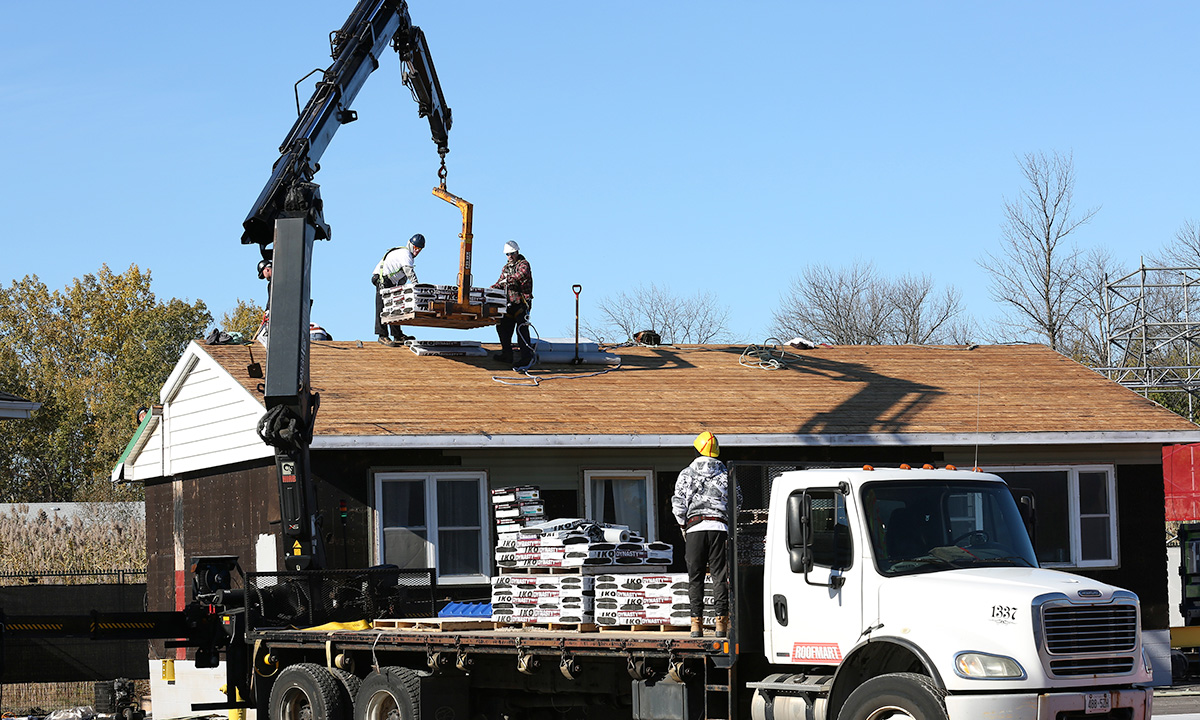
It is against OSHA regulations to carry shingle bundles up step or extension ladders, as they may be considered heavy objects that may cause you to fall. Instead, you need a roofing hoist or a ladder hoist to lift the shingles up for you. Do not attempt to make a shingle bundle lift of your own design, as it will open you up to liability. Instead, purchase a reliable ladder hoist to protect your employees and yourself.
Boom trucks or lifts are another option. These trucks have powered conveyor belts to bring the shingles to height. Whichever method you choose to help you get the shingles to height, be sure to properly stack shingles on the roof. Your last option, and perhaps the easiest, is to work with a distributor that offers rooftop delivery, so you don’t have to worry about getting the shingles to the roof at all.
Hard Hats
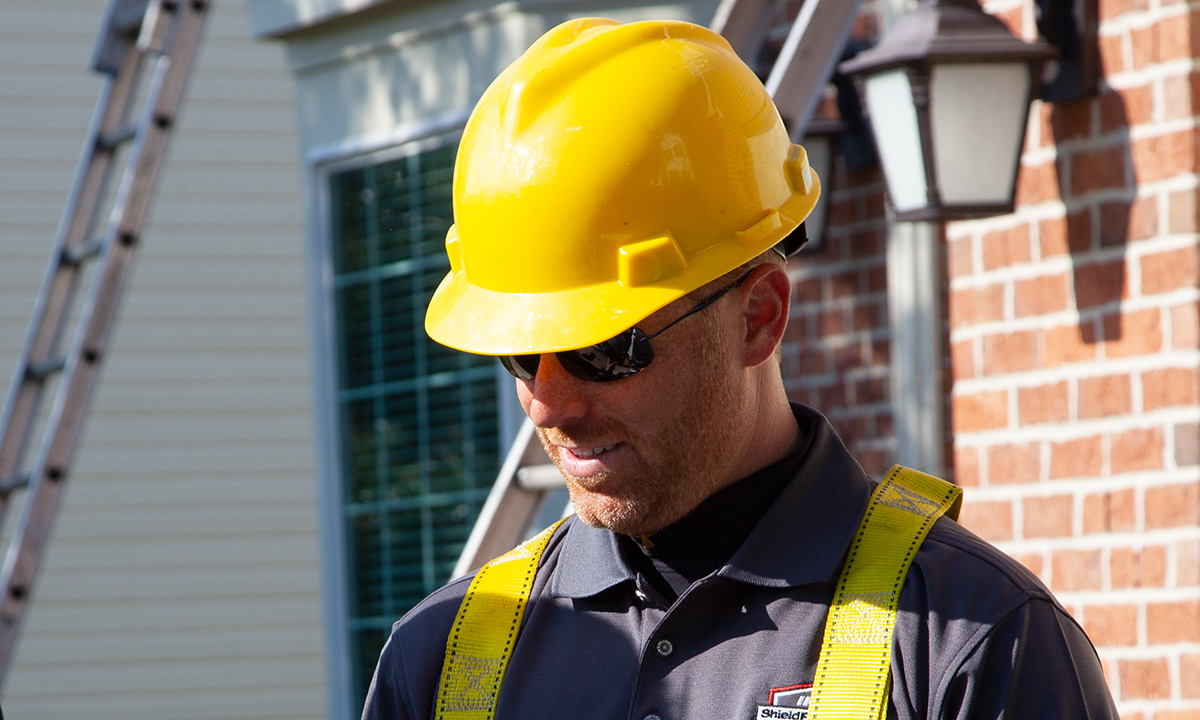
Hard hats are essential to protect your head and your employees’ heads. When choosing a hard hat, be sure that it conforms to the current safety regulations in your area. In the United States, your hard hats should be OSHA approved and should meet American National Standards Institute (ANSI) requirements.
In Canada, your hard hat should abide by your province’s safety standards as well as the Canadian Standards Association’s (CSA) requirements. For example, in Ontario, your hard hats should be Class G, which are hard hats that protect the crown, sides and back of the head. Several ANSI and CSA hard hat types fulfill these requirements.
Be sure you have one hard hat per employee. Also, consider having a replacement on hand, because a hard hat must be disposed of after it suffers an impact — no matter how small. This is why you should not buy used hard hats, as you won’t know if a previous blow has ruined them. Plus, they may not be up to current safety standards.
Roof Safety Harnesses and All Other Personal Protective Equipment
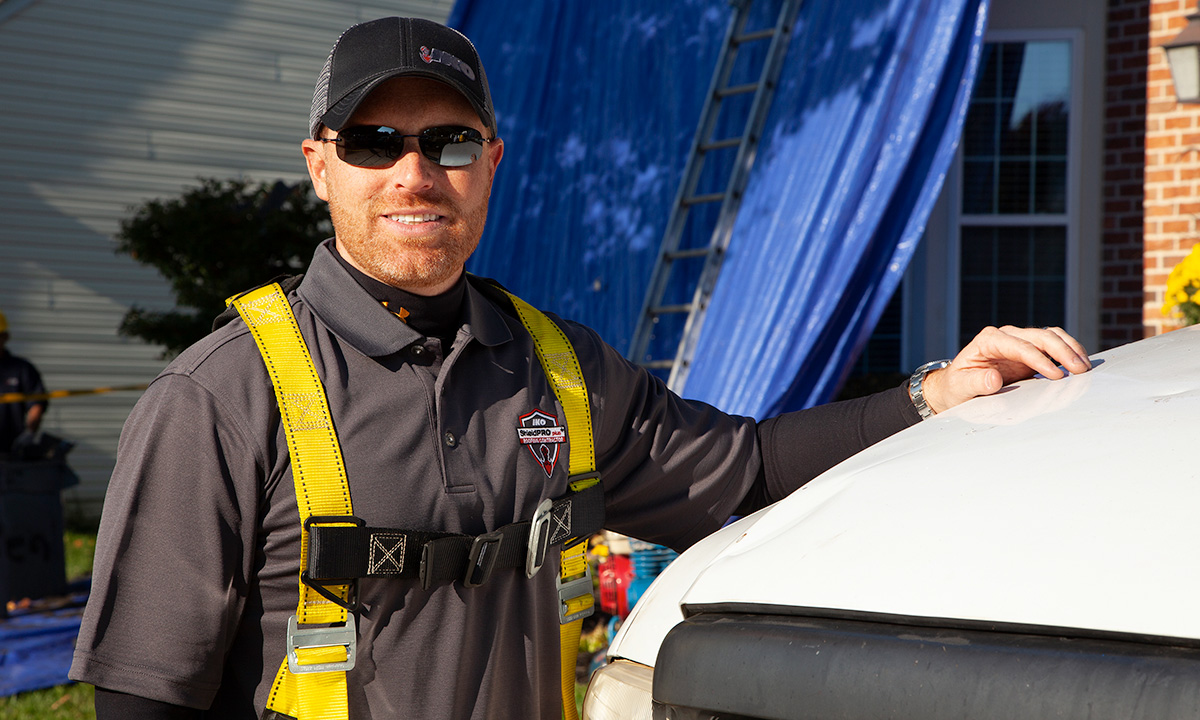
There are many regulations pertaining to safety harnesses and personal protective equipment that you’ll need to familiarize yourself with before you purchase them. For Americans, OSHA requires each roofer to use a personal fall arrest system (PFAS) if they may fall a distance of 6 feet or more. These systems are held to high standards. For example, they must be able to stop a fall of 5,000 pounds per worker. When you find a roof safety harness that meets the requirements, remember to buy at least one for each roofer. Also, if you are not using a permanent anchor, you will need to remove it after the job is done to prevent someone else from using it.
Roofing Shoes
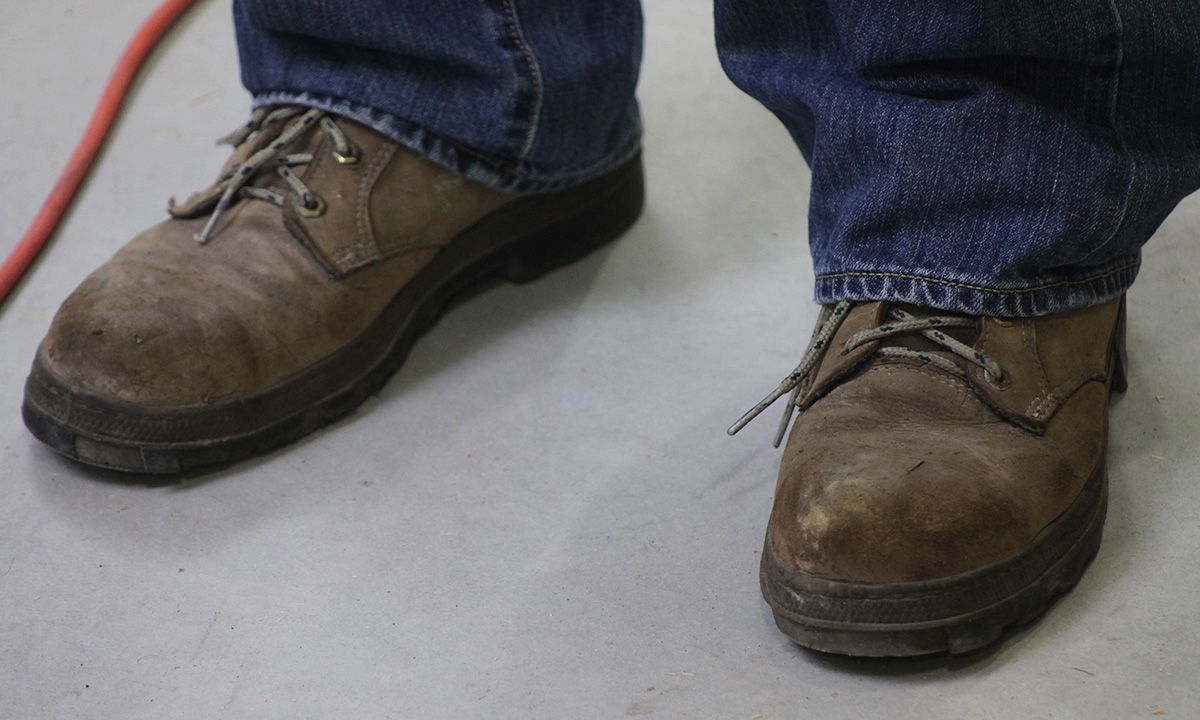
Which shoes do roofers wear? Both soft-soled and steel-toed shoes. You need soft soles that can bend a bit to avoid applying undue stress to shingles. If you walk on a roof while wearing shoes that have tough plastic soles, you may harm the roof.
On the other hand, you do need steel-toed shoes to protect your toes from heavy equipment. Otherwise, dropping a single bundle or a hammer on your toe may result in injury.
Roof Brackets or Toe Boards
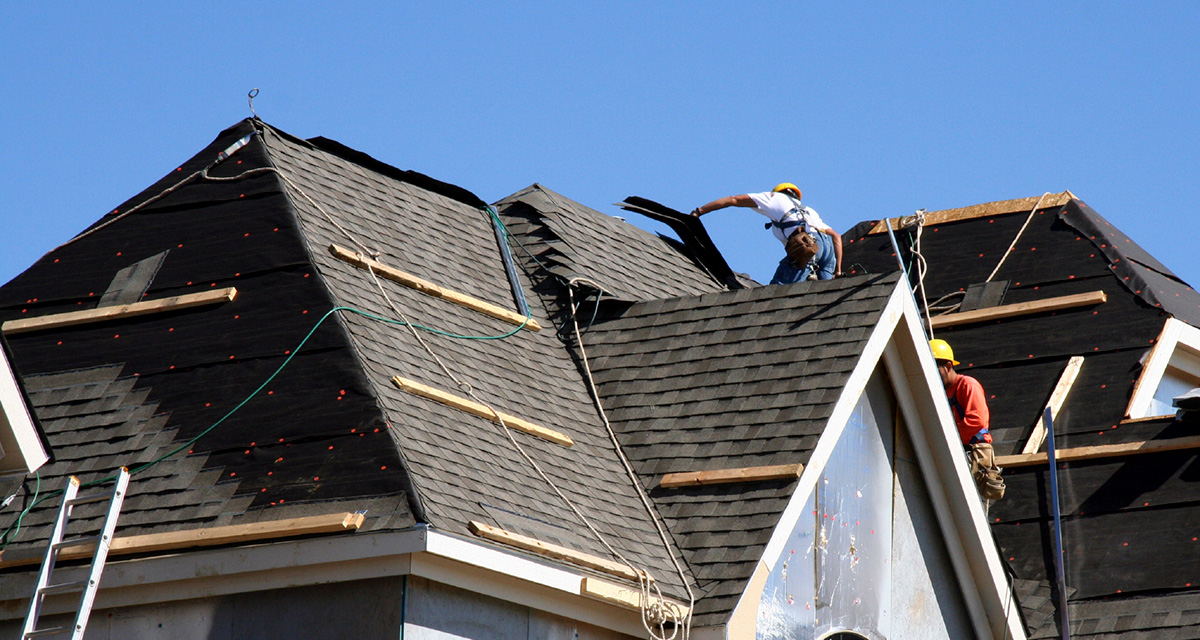
On roofs with a steep pitch, you may need roof brackets or toe boards to give you some footing. A PFAS is not always enough on these roofs because, though the PFAS may stop your fall, small falls are still dangerous and will interrupt your workflow. Plus, on the steepest roofs, there simply may be no way to stand on them without some bracing.
Roofing toe boards are 2-by-4-inch boards that are screwed into the roof. You use them as footing or to safely load shingles onto roofs of specific pitches. You will need 4-inch Ardox Nails for installing brackets/toe boards.
You can now find steel brackets for roofers that serve the same purpose. They can be part of a guardrail system, or they can be used to brace toe boards. There’s much more to learn about how to protect your roofers from falls.
Other Safety Equipment
There are other types of safety equipment you can use, or may be required to use, based on your local regulations, the height you work at and more. For example, scaffolding, warning lines, guardrails and aerial lifts may be required. You may also benefit from equipment that can keep you cool while roofing. Learn more about your safety requirements and options from OSHA’s “Protecting Roofing Workers” publication.
Rake and Broom
It is important to clean up after your work to leave a good impression on the homeowners and demonstrate that you care about their property. Use a stiff broom to clean up stray nails or shingles on decking and patios. Use a rake for the same purpose in landscaping or on lawns.
Magnetic Sweeper
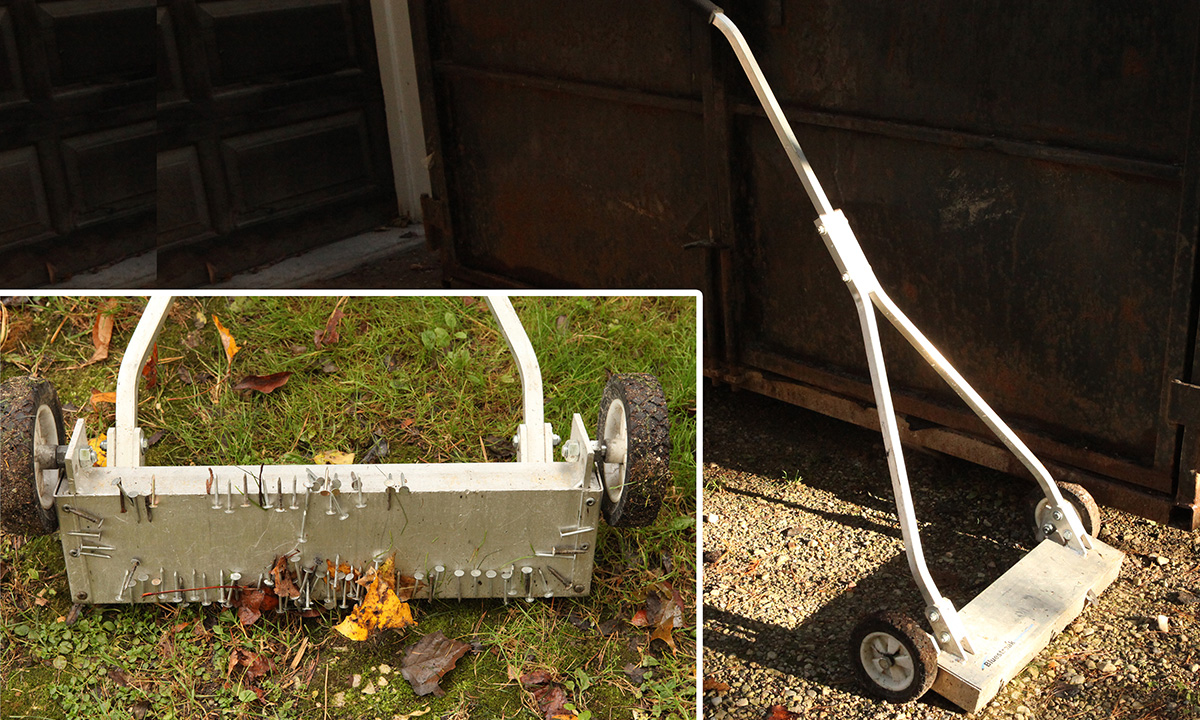
A roofing magnetic sweeper picks up stray nails after a roofing job. It’s important to make your best effort to clean up stray nails so that homeowners will feel secure stepping onto their lawn when you’re gone.
Truck
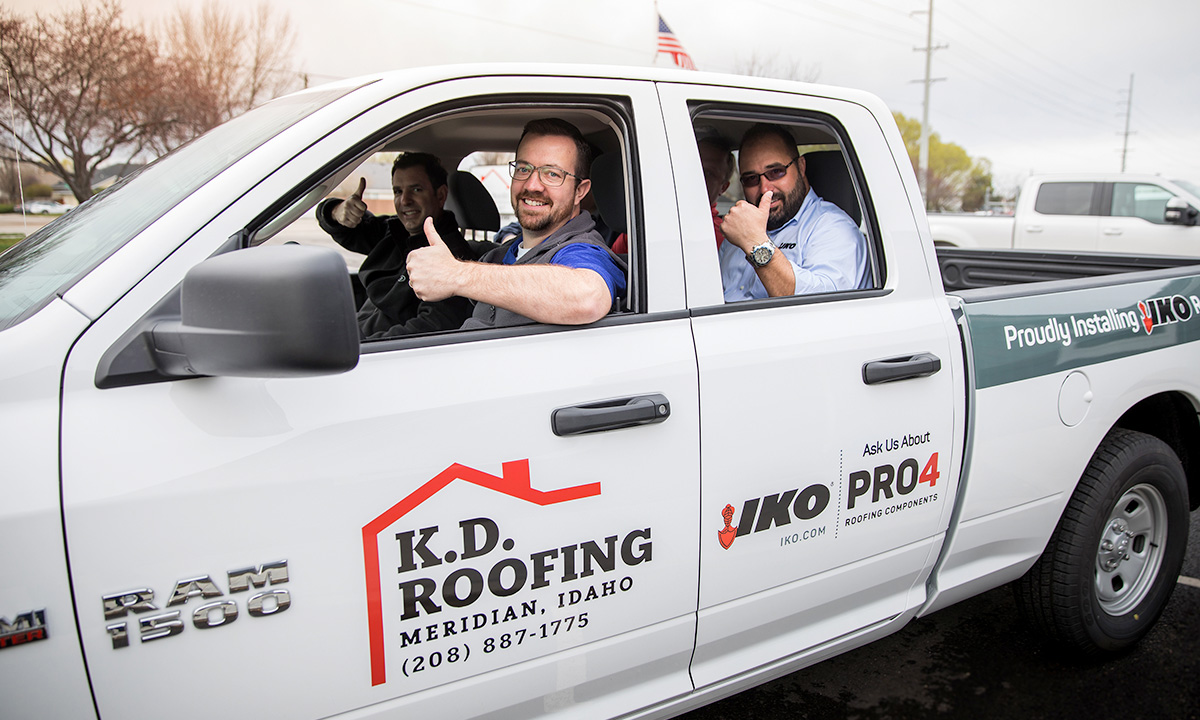
Finally, you need a work vehicle to bring your tools, equipment and materials to the job site. A roofer needs a bit more from their vehicle than just a working engine. For example, a covered van or pickup truck with a covered bed is best. You need to be able to protect your tools from the elements.
Do You Have the Tools Every Roofer Needs?
As you can see, a roofer needs over 30 tools and pieces of equipment in order to work with asphalt shingles. You can print off the first page of this article and use it as a checklist to ensure you have every tool you’ll need for your first roofing job. Then, you might want to learn more about how to start your roofing business.
